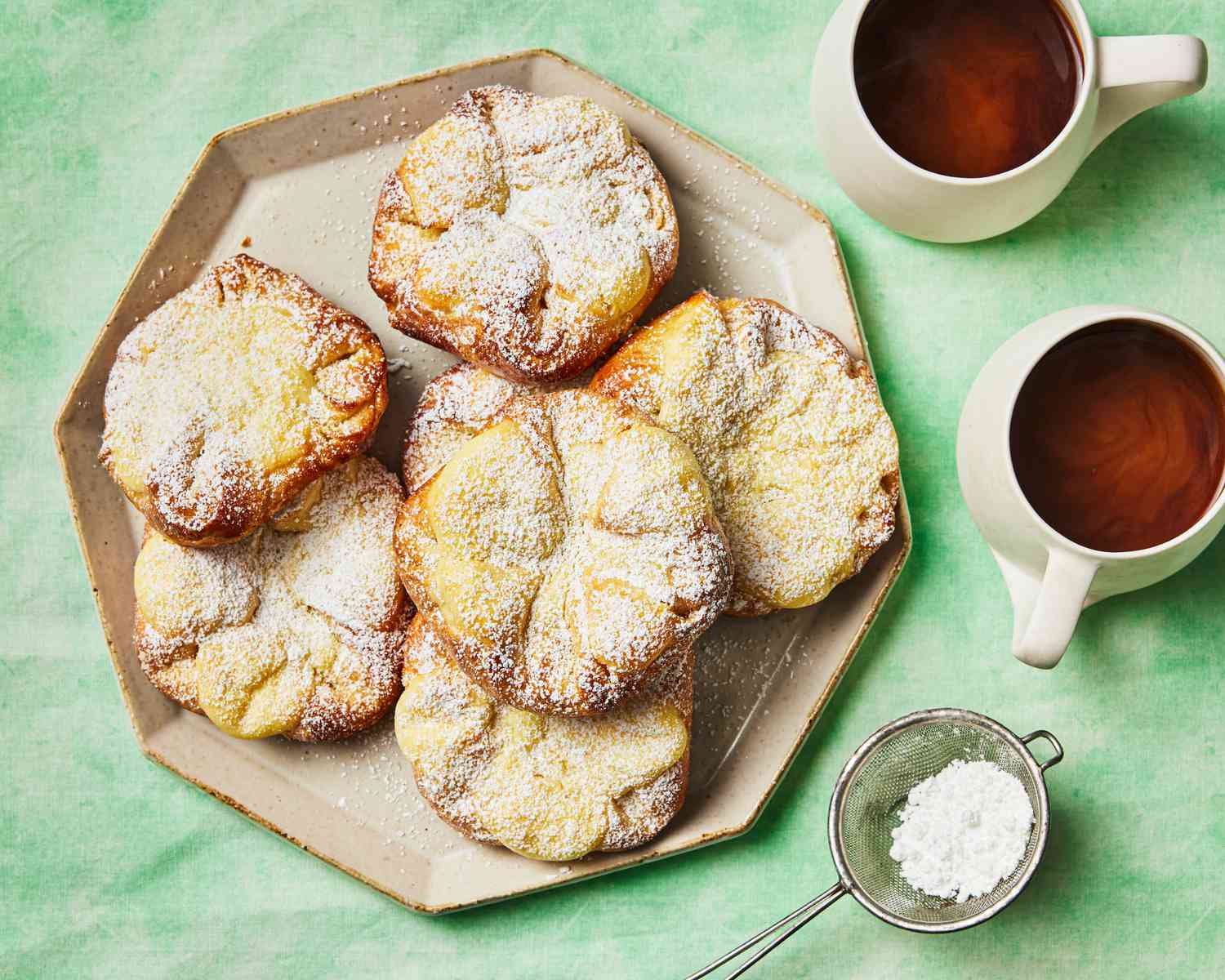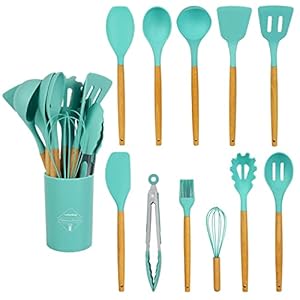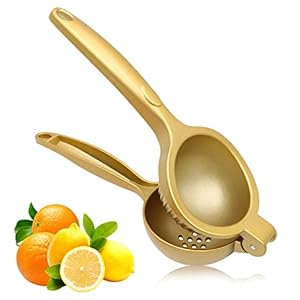
Why This Recipe Works
- Chilling the dough in-between folds permits the gluten to relaxation and offers the butter time to develop into chilly once more, which is essential for creating flaky layers.
- The upper protein content material in bread flour gives extra stability and construction to the dough.
- Utilizing European-style butter—which has a better proportion of butterfat—lends the pastries wealthy taste.
We’ve all seen the chilly, wan Danishes sitting behind the bakery case or forgotten about in a pile of breakfast pastries in some convention room. Pale, stodgy, and cloying, their most engaging high quality is that they’re going to go down simpler than the stale croissants subsequent to them. It is not a brand new downside—late meals author Mimi Sheraton complained in regards to the state of the Danish again in 1977. She wrote within the New York Times that if Denmark ever broke off diplomatic relations with the U.S., it’d doubtless be due to our misuse of the phrase Danish “to explain the leaden, oily, artificially yellow and cloyingly candy muffins we discover in luncheonettes… In comparison with the yeasty, buttery, flaky and delicate pastries that Danes know as Vienna bread—wienerbrod—the imposters we produce quantity to a nationwide insult.”
She wasn’t fallacious then, and, sadly, her feedback nonetheless ring true. So whereas it might be a labor of affection to make your individual Danishes from scratch, it’s value taking the time to do it proper. Made with a yeasted dough that’s layered with butter, the pastry is one thing of a cross between a brioche and a croissant. An ideal Danish must be tender, flaky, and properly browned, with a balanced filling of cream cheese, jammy fruit, or pastry cream. These Danishes are wealthy with butter and filled with candy, tangy cream cheese—and will very nicely persuade you that the one ones value consuming are heat, freshly baked ones.
Severe Eats / Greg Dupree
As with so many origin tales of widespread meals, the supposed delivery of the cheese Danish sounds somewhat too cute to be true. In keeping with Jan M. Olsen, who dug into the Danish’s beginnings for the Los Angeles Times in 1993, the pastry was by chance created by a baker named Claudius Gelee, who apparently (and oh, so conveniently!) forgot so as to add butter to his dough. In an try to hide his mistake, Gelee started “folding lumps of [butter] into the dough.” A lot to Gelee and his colleagues’ shock, the pastry turned out to be a hit—what Olsen describes as “the lightest dough ever seen in France.” Quickly after, Gelee opened his personal cafe in Paris and Florence, and someplace alongside the way in which, Italian bakers introduced the pastry to Austria.
It wasn’t till the late nineteenth century, in line with Sandra J. Weber within the New York Times, that the pastry arrived in Denmark when Danish bakers went on strike. In determined want of bakers, the nation sought substitute staff from Vienna, who introduced with them the wienerbrod so beloved in Denmark at the moment. “By the point the strike was settled,” Weber famous, “Danes had acquired a ardour and aptitude for the wealthy, mild pastries.”
Getting Danish Dough Proper
Historically, Danishes are made with a yeasted, laminated dough enriched with sugar and eggs. Whereas Danishes bear an identical resemblance to puff pastry and croissants, the doughs all differ barely from each other. Puff pastry is made up of flour, water, and salt; croissant dough consists of flour, sugar, yeast, milk, and salt; and Danish dough is actually croissant dough that’s been additional enriched with eggs. After the doughs are combined, they’re then laminated—rolled and folded over themselves a number of occasions—with a relaxing butter block. Because the dough bakes, the butter between the layers melts and creates pockets of steam, lifting the pastry and creating crisp, flaky layers.
Now, making a laminated dough from begin to end is a time-consuming, labor-intensive course of that strikes worry within the hearts of even probably the most skilled bakers and pastry cooks. Fortunately for us, there’s a shortcut we will take that can nonetheless end in a wealthy, buttery dough. As a substitute of laminating our dough with a butter block, we’re going to take a cue from tough puff pastry (or blitz puff pastry) by incorporating items of butter into the dough, then folding the dough over itself thrice to create a complete of 27 layers.
Methods to Fold Your Dough Utilizing the Letter Fold Technique
One of the simplest ways to fold the dough is with what’s referred to as the letter fold technique. To make a letter fold, you first roll your dough out right into a rectangle—on this recipe that’s an 18- by 9-inch rectangle—and produce the fitting third of the dough over the middle, then fold the left third on prime to create a smaller rectangle. The dough is then chilled in order that the butter can agency up, after which folded in the identical manner a second time. The entire course of is repeated as soon as extra for a complete of three letter folds.
Severe Eats / Greg Dupree
Every letter fold creates exponentially extra layers; by the point you’ve accomplished three folds, you’ll have a complete of 27 layers. (The primary fold leads to three layers; the second fold in 9; and the third fold in 27.) Although we aren’t laminating with a butter block, folding our butter-enriched dough will nonetheless create the flaky layers we wish in a Danish.
Controlling Gluten Growth
Every time we roll out our dough, we’re creating gluten, a community of protein molecules referred to as glutenin and gliadin which are accountable for the springy, chewy texture in bread, pizza, and noodles. (You may learn extra about that here.) Whereas we do need some gluten improvement to offer construction for our pastry, we don’t wish to develop a lot gluten that our Danishes develop into robust and rubbery.
It is a little bit of a balancing act, as fat like butter and eggs act as a tenderizer in dough by coating the proteins and stopping them from bonding as simply to one another. Since fat cut back gluten improvement, and since Danish dough is kind of ample with fats, we have to flip to a higher-protein flour (i.e., one which kinds gluten extra readily) like bread flour to compensate. What additionally helps restrict extreme gluten improvement is resting the dough between folds, which, along with conserving our dough and butter chilly, helps gluten chill out. The results of this gluten and fats balancing act is a dough that’s tender but steady, capable of maintain the high-moisture cheese filling with out collapsing underneath it.
Utilizing European-Fashion Butter
This recipe requires European-style butter, which has a better proportion of butterfat (usually 82-to-85%) and lends the pastries a richer taste. “These butters,” writes Harold McGee in On Food and Cooking, “include 10-20% much less water, which will be a bonus when making flaky pastries.” Is it essential to make use of European-style butter? No. However since a lot of the pastry’s taste comes from the amount and high quality of butter used, it’s value contemplating utilizing a higher-quality European-style butter, which can also be typically cultured and thus extra full-flavored.
When you can’t discover European-style butter, don’t fret—it might be some comfort to know that American and Canadian butters are required to have a minimal of 80% butterfat, so for those who’re selecting between a butter with 80% butterfat and one other with 82% butterfat, it’s extremely unlikely it would make or break the recipe.
Making a Balanced Cream Cheese Filling
What units a very very good Danish other than a mediocre one isn’t simply the dough—it’s additionally the filling. It could be tempting to beat cream cheese along with an ungodly quantity of sugar and an egg yolk, however taking the time to make a couple of low-effort additions can imply the distinction between a spectacular pastry and a subpar one; right here, somewhat lemon juice provides brightness and acid, whereas vanilla brings a fragile floral word. Seasoning with simply the correct amount of salt highlights these delicate flavors.
Baking and Ending the Pastry
Severe Eats / Greg Dupree
After all of your exhausting work, it’s time to trim, proof, and bake the pastries. You’ll portion the dough into four-inch squares, then pipe two tablespoons of cream cheese frosting into the middle of every. Filling the pastries earlier than they’ve proved permits the dough to puff across the cream cheese and lets us squeeze a bit extra filling into every Danish. It’s essential to correctly proof the pastries earlier than they bake—this helps to additional develop each taste and dough energy, leading to crisp, flaky pastries with loads of layers. Baked till golden brown and topped with a sprinkling of confectioners’ sugar, these Danishes would be the first you’ll truly wish to attempt whereas they’re nonetheless contemporary…and possibly even with a cup of espresso. You’ll must put within the work to make them from begin to end, however you’ll additionally by no means be unhappy on the sight of a Danish once more.
Trending Merchandise










